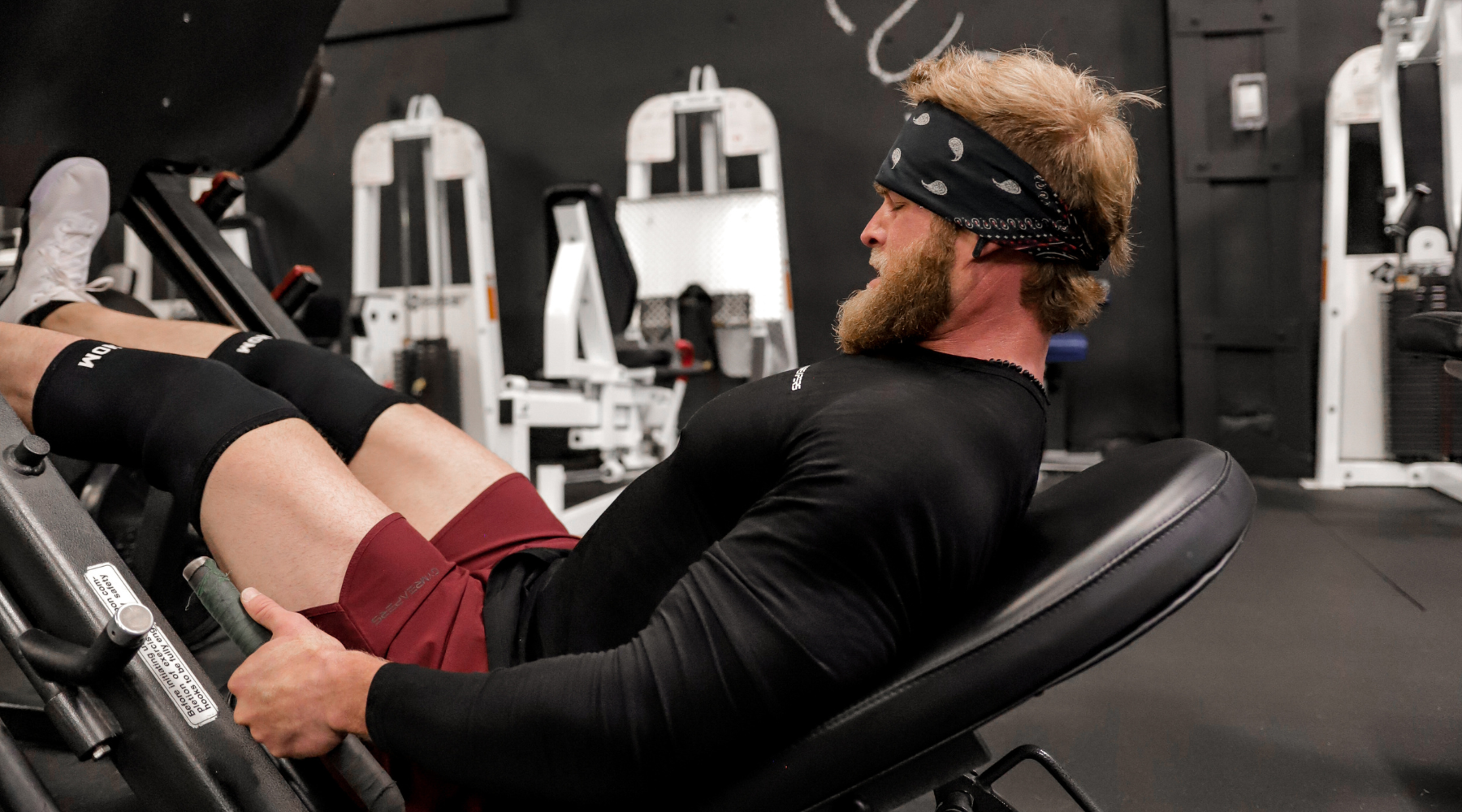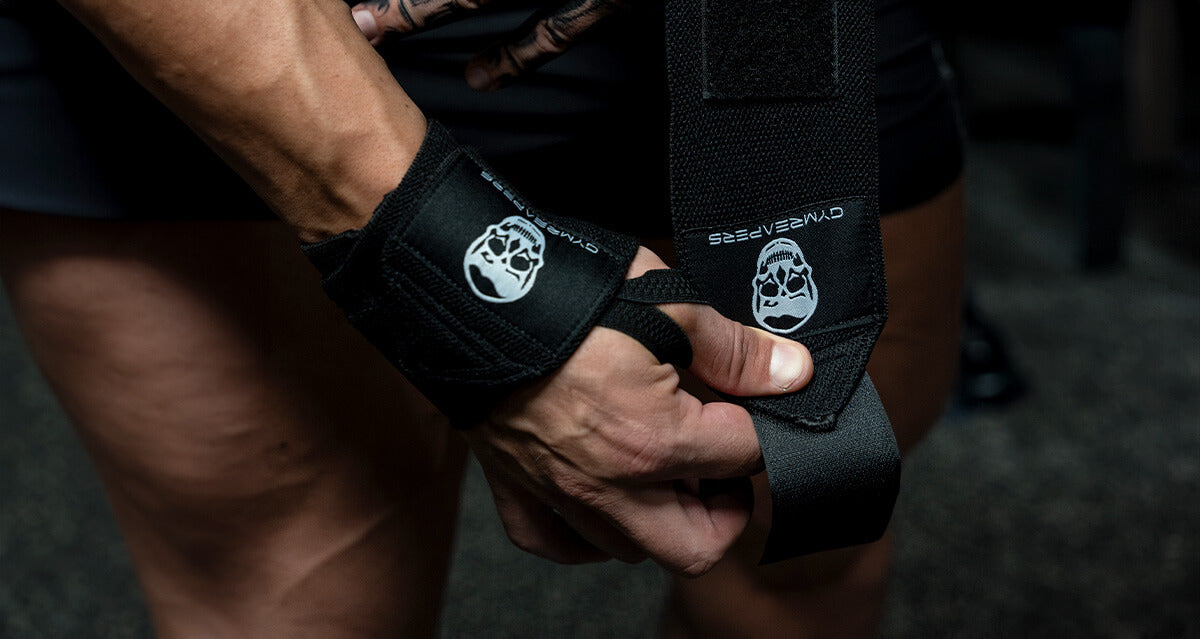Most lifting belts can be classified as either powerlifting or weightlifting style belts.
The main difference between these belts is that powerlifting belts are made to provide high levels of support, especially for compound lifts like the bench press, squat, and deadlift. Weightlifting belts strike a balance between support and flexibility, which is necessary for dynamic exercises like the Olympic lifts.
Below I’ll cover the key differences between the two belt styles, review the criteria you should consider when selecting one, and offer selections for best belts for each style.
9 Differences Between Olympic Weightlifting vs Powerlifting Belts
1. Weightlifting Belts Are Easier to Find the Proper Size
Weightlifting belts tend to be easier to find the right size, as the fastening system is either a prong-style belt or a ratchet fastening system.
Both of these can easily be adjusted, however, the ratchet system allows you to also wear the belt at varying levels of snugness.
Powerlifting belts also come in prong-style belts, however, some more advanced lifters opt for a lever-style belt for added security. The lever-style belts are sized custom to your body, which offers a very unique and snug fit.
To customize a lever belt, you actually need a screwdriver, which isn’t as easy to adjust. If you are only using the belt for 2 or 3 lifts, then adjusting the belt isn’t a main concern.
- Related Article: Prong vs Lever Belt
2. Weightlifting Belts Come in Tapered OR Straight Cut Designs

Weightlifting belts come in both a straight-cut and tapered design, whereas powerlifting belts are straight-cut only.
A straight cut design simply means being the same width all the way around the belt. Tapered belts mean that the belt is wider in the back and tapers narrower in the front.
Straight-cut belts offer good stability and are standard to most belts, however, they can get in the way, especially in deep squats or dynamic movements (the ridges of the belt can rub into the hip bones or ribs).
Weightlifting belts can also come in a tapered design, which usually has a wider belt in the back, and slimmer, tapered widths in the sides and front of the belt. This is ideal if you want added flexibility for movements that require a high degree of mobility.
- Related Article: 4-Inch vs 6-Inch Lifting Belts
3. Powerlifting Belts are Made of Thicker Material
Powerlifting belts tend to be thicker, as these belts aim to provide as much rigidity and support rather than finding a balance between that and flexibility for dynamic lifts.
Lifters who need the highest levels of support typically go for a 10mm or 13mm powerlifting belt, made of rigid leather. These belts provide greater stability.
Lifters who want a belt that offers good stability that also allows more flexibility to perform dynamic movements (such as lunges, snatch, and cleans), tend to go with a weightlifting belt that is less thick.
Thicknesses can be as little as 5-7mm.
4. Weightlifting Belts Can Be Wider than Powerlifting Belts

Weightlifting belts tend to be wider than powerlifting belts, primarily due to competition rules that allow weightlifting belts to be wider than powerlifting ones.
Weightlifting belts can be up to 4.75 inches wide, while powerlifting belts can only be a maximum of 4 inches wide.
This isn’t a major difference, but it’s something to note if you are planning to compete in either sport.
5. Powerlifting Belts Tend to Be More Expensive
Powerlifting belts tend to be more expensive than weightlifting belts because they usually use more material and have more expensive fastening systems (bigger prongs or a lever).
The thicker the belt, usually leather, the more expensive the belt is.
When you add on a heavy-duty metal buckle or lever, a quality powerlifting belt can be over $100.
That said, a quality belt will last you many years if you take care of it, so price should not be a huge factor if you are looking at a belt as a long-term training tool investment.
Weightlifting belts can also be expensive, however, they tend to be less thick (use less material), have smaller buckles, and sometimes come in nylon (less expensive material).
Quality weightlifting belts can be anywhere between $30 (nylon) to $70 (leather).
6. Powerlifting Belts Usually Take Longer to Break-In

Powerlifting belts tend to have longer break-in periods due to the thicker leather material.
This can vary based on the thickness of the belt (13mm belts will take longer) as well as how often you are training in the belt.
Weightlifting belts tend to have a quicker break-in period as you are wearing them for more movements in a session (snatches, cleans, squats, deadlifts). They also tend to be not as thick as powerlifting belts.
If you have a nylon belt (weightlifting or powerlifting style), the break-in period will be minimal, if at all.
7. Olympic Weightlifting Belts Offer More Flexibility During Movement
Weightlifting belts are more flexible than powerlifting belts as they are not as thick and are also offered in tapered styles.
Weightlifting belts do not require as much belt thickness, which means you will have more flexibility to perform more dynamic movements. While there are still food levels of support, weighting belts find a balance between flexibility and rigidity.
Additionally, weightlifting belts come in tapered styles, which allow you more flexibility as the ridges of the belts are slimmer on the sides to not get in the way.
Lastly, some weighting belts are made of nylon, which is extremely flexible and still offers good support.
It is important to note that if you want a belt to support you in powerlifting movements (bench, squat, deadlift), and do not plan to wear it for other movements, then belt flexibility should not be something you take into consideration.
- Related Article: Is Using a Lifting Belt Cheating? No, Here's Why
8. Powerlifting Belts Are Worn Only On Non-Dynamic, Heavy Compound Exercises

Powerlifting belts are ideal for heavier, compound exercises like squats, deadlifts, bench presses, bent-over rows, and overhead presses.
They provide more support than weight lifting belts, which is the key purpose of wearing a belt on those lifts.
A weightlifting belt, while still offering good support, will not provide as much support as a powerlifting belt during those movements as it was made to offer support AND flexibility.
But when doing non-dynamic strength exercises flexibility is not a concern (in fact, you do not want flexibility).
If however, you want a belt that can be used on both dynamic (snatch, clean, lunges) and non-dynamic exercises, then a weightlifting belt may be a better choice.
9. Weightlifting Belts Are More Comfortable to Wear
Weightlifting belts tend to be more comfortable to wear and keep on during sessions as they are usually thinner, offer a tapered cut design, and can even be made of softer (still supportive) nylon.
Comfort, however, should not be the main purpose of wearing a belt, especially if you are trying to lift heavy.
This is why most lifters (both powerlifters and weightlifters) will opt for thicker leather belts, as they want more support than a softer nylon belt and are not concerned with “being uncomfortable” in a belt.
If you are aiming to get a belt to help you lift heavier, comfort should not be a main determining factor since you will put it on for a heavy lift, and take it off between sets.
- Related Article: What Lifting Belt Does Brian Shaw Use?
Key Criteria For A Powerlifting Belt

When selecting a powerlifting belt for competition use, it is important to understand that our belt needs to meet the specifications of your lifting federation AND be from a belt manufacturer that has been approved by that federation.
At Gymreapers, we have a few belts that meet the belt requirements of the International Powerlifting Federation (IPF) and are on the approved list of belts.
These belts meet the requirements below:
- Belts cannot be wider than 10cm (4 inches)
- Belts cannot be thicker than 13mm
- Belt buckle cannot be wider than 11 cm (inside) and 13cm (outside)
- Tongue loop on the belt cannot be wider than 5cm
- Distance between the belt buckle and far end of tongue loop cannot exceed 25 cm
- Belts can be made of leather or nylon
Related Article: How to Choose the Best Knee Sleeves for Powerlifting
Key Criteria For An Olympic Lifting Belt

Olympic weightlifting belts must also meet specific requirements (page 22) set by the International Weightlifting Federation (IWF), which is the golden standard that many international weightlifting associations use as well (USA Weightlifting uses the same requirements).
Belts can be from any belt manufacturer, as long as they meet the below belt requirements:
- No wider than 12cm (4.75 inches)
- Belt must be worn on the outside of the lifter’s costume (singlet)
Related Article: What to Look for When Buying Olympic Lifting Wrist Wraps
Do You Need A Powerlifting or Olympic Weightlifting Belt
If you are a competitive lifter in either of the two strength sports above…
Then you should get a belt that is made for your specific sport (see recommendations below).
If you are someone who competes in both sports…
Then you may want to get two belts; a powerlifting belt to wear during powerlifting movements (squat, bench press, and deadlifts), and a weightlifting belt to wear during snatches and clean and jerks.
If you are someone who does not compete in either of the sports…
Then choose a belt that best fits your goals and needs (using the differences section above).
Related Article: 7 Different Types of Lifting Belts (Explained)
Olympic Weightlifting and Powerlifting Belt Recommendations
Powerlifting Belt Recommendations
6mm Prong Belt

This belt is made with everyday lifters in mind and is ideal for powerlifting, general strength training, and bodybuilding. This belt is made from durable leather and comes with a double-prong style buckle for easy use and good support.
10mm Prong Belt

This belt is made from high-grade leather, which will provide high levels of support for strength training and serious weightlifting. The heavy-duty design comes with reinforced stitching and an easy-to-use, highly durable single-prong buckle. This belt is a great belt for heavy lifts and general strength training. This belt is IPF and USAPL approved
10mm Lever Belt

This belt is made from premium leather, which means you will get high levels of stability, durability, and performance. The lever is made by athletes for athletes, and will stay secure even under the heaviest of loads, and offers a truly custom fit for serious lifters.This belt is IPF and USAPL approved.
Olympic Weightlifting Belt Recommendations
7mm Tapered Weightlifting Belt

This leather belt is designed to stand up to the tough demands of weightlifting training. Not only is this capable of supporting you during hard leg workouts, but it can also provide support and flexibility for dynamic movements like the Olympic lifts. The belt comes with a double-prong buckle, reinforced stitching, and will not rip or tear like cheaper leather belts.
Quick-Locking Weightlifting Belt

This belt is made of nylon, which means it will be durable and comfortable, providing you with good support for a wide variety of lifts. The quick-locking fastening system will ensure the belt will not come undone during lifting. The fastening system includes velcro, as well as a metal ratchet system. This belt is ideal for functional fitness athletes, everyday lifters, and individuals looking for a comfortable and custom fit.













Leave a comment
All comments are moderated before being published.
This site is protected by hCaptcha and the hCaptcha Privacy Policy and Terms of Service apply.